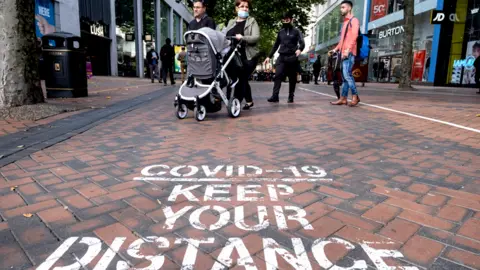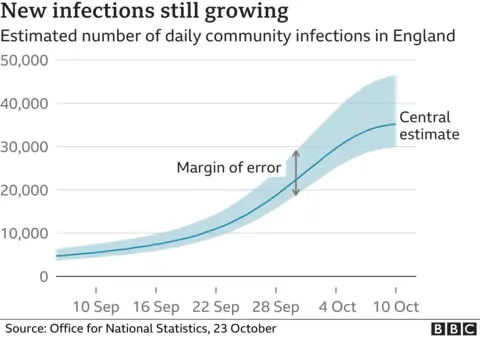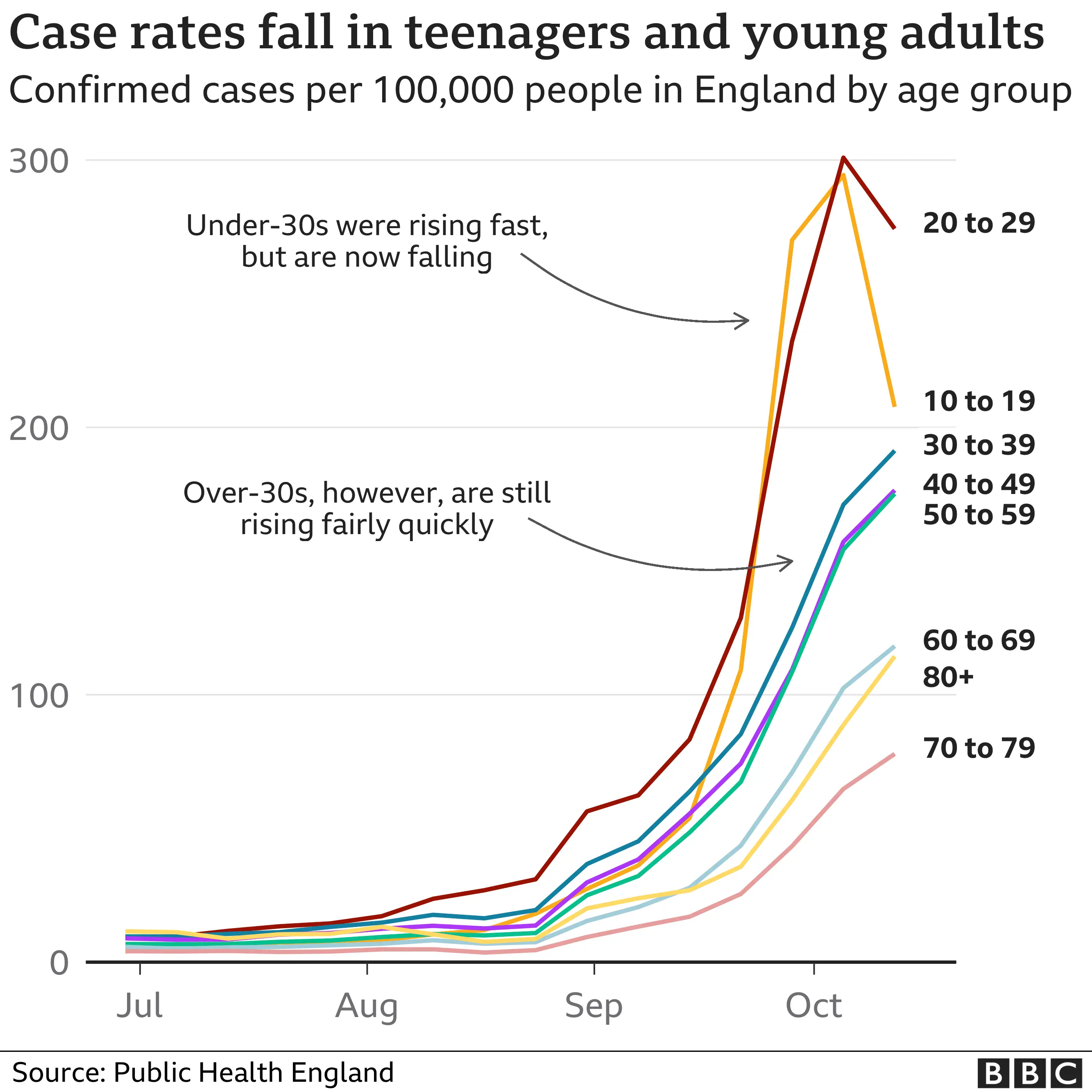Coronavirus infections continue to rise across UK
 Getty Images
Getty ImagesCoronavirus infections continue to rise across the UK, according to the latest data from the Office for National Statistics.
It estimates cases have risen by a quarter to more than 35,200 a day in England.
Infection rates have been highest among teenagers and young adults in recent weeks.
Around one in 130 people you might meet in the street in England had coronavirus in the week to 16 October, data from the ONS infection survey suggests.
This compares with one in 180 in Wales and Scotland, and one in 100 in Northern Ireland.
The highest levels of the virus continue to be in the north-west and north-east of England.
Meanwhile, the R number has decreased slightly and is now estimated to be between 1.2 and 1.4. That means every 10 people with the virus pass it on to 12 or 14 others, on average.
The ONS figures are based on a survey of people in random households whether they have symptoms or not, giving one of the most accurate pictures of the epidemic.
Although cases are still rising, they suggest a slight slowing in the rate of growth of infections since the previous week's survey.

This echoes data from Public Health England which suggests cases may now be falling among people in their teens and 20s while still increasing in all other age groups.
The ONS figures are much higher than the lab-confirmed cases recorded by the UK government every day. Another 21,242 cases and 189 deaths were confirmed on Thursday.
Another source of data, the Covid Symptom study app, suggests there were more than 36,000 new daily cases in the UK over the two weeks to 18 October - up from nearly 28,000 a week ago.
These numbers are based on users logging their symptoms and positive tests on the app.
Tim Spector, professor of genetic epidemiology at King's College London, and founder of the app, said the gap between the northern regions of the UK and the south "was growing".
"Our data clearly shows that the number of cases is still being driven by the younger generations, which should mean less pressure on NHS admissions compared to earlier in the year," he said.
But he warned that people of all ages can get long Covid and it is important to control the second wave.

PHE's weekly report on the spread of the virus shows case rates are still highest in the under 30s, but are now coming down.
In contrast, cases per 100,000 people in all age groups over 30 continue to rise.
In hospitals, admissions and deaths are still rising right across England and health officials are concerned that black, Asian and minority ethnic communities make up nearly 40% of admissions to intensive care.
The highest hospital admission rates for people with Covid-19 were in the over 85s, and in the north west of England.

- RAISING AWARENESS OF TESTICULAR CANCER: Chris Hughes is on a mission
- LOOKING AFTER YOUR MENTAL HEALTH: Escape to the rainforest with the Mindul Mix

